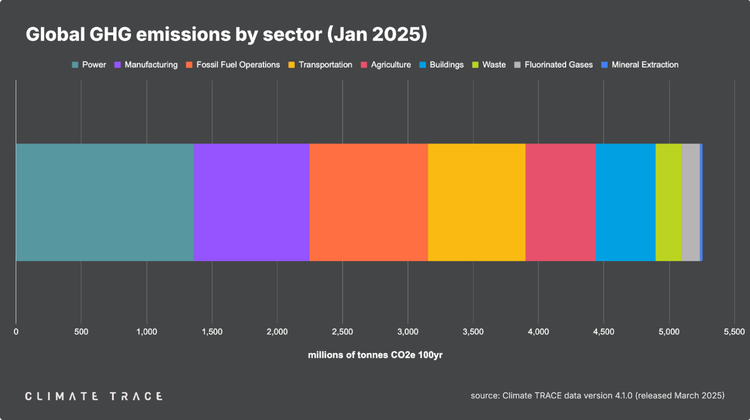Challenges in disclosure of Scope 3 greenhouse gas emissions in vertically integrated firms

This is a guest article written by Harry G. Broadman is Principal, WestExec Advisors, and Senior Economist, RAND Corporation.
Scope 3 disclosures were by far the most contentious topic in the U.S. Securities and Exchange Commission (SEC) draft climate disclosure rule – to the point where they were removed from the final rule, published last spring.
While the future of the SEC climate rule – which was legally challenged as soon as it was announced and has since been stayed – is now largely compromised under a second Trump administration, the debate around Scope 3 greenhouse gas emissions reporting continues, with good reason.
There has simply been insufficient effort in the U.S. – and indeed worldwide – to ensure that the conceptual underpinnings of the three categories for scopes of emissions disclosures, taken as a whole, are not only logically consistent with one another but also form an integrated framework that can accurately measure and account for total net emissions at the enterprise level, in an economically meaningful way against the backdrop of increasingly complex corporate structures and functions.
This is especially the case given the widespread organisational form of vertical integration among modern businesses today, whether those headquartered in the Global North or Global South and regardless of the actual locales and jurisdictions in which all their entities, including cross-border subsidiaries, affiliates, and joint ventures, conduct operations.
Partnerships, prioritisation and procurement bonuses - Lessons from CSO Futures' Scope 3 webinar
Scope 1 vs Scope 2 vs Scope 3 emissions: A refresher
Scope 1 and Scope 2 Emissions
Scope 1 emissions are the greenhouse gases emitted by firms that are “produced” directly through their own in-house operations. For example, those emitted on the factory floor by a chemical company operating its plastic injection mold machines.
Scope 2 greenhouse gas emissions are those generated by such businesses’ in-house “consumption” of inputs that are procured from external entities. For example, greenhouse gases released as a by-product of an agricultural company’s operations of its oil-fired boilers for generating heat in the workspace, where the oil is procured from a fuel dealer.
Scope 3 Emissions
Scope 3 emissions are those generated “upstream” and/or “downstream” within a firm’s supply chain:
(i) “Upstream” greenhouse gas emissions include those emanating from the “consumption” (use) of “inputs” (products or services) by the firm in question that are purchased from or otherwise supplied by separate entities:
- This could be a firm’s (a) utilisation of its purchased capital goods; (b) use of transporters to bring inputs to the business; (c) the production of the fuel and energy supplied to the firm; (d) waste generated from the use of such inputs by the firm’s operations; (e) emissions from travel by workers to and from the firm as well as business-related travel by executives or others;
(ii) “Downstream” emissions from the firm are those emanating from the business’ “sale and consumption” of its “outputs” by others:
- This could include (a) the distribution of the business’ products/services it sells; (b) the use of such products/services by the business’ customers; (c) any additional processing of those products/services by others downstream; or (d) further investments made by other parties that involve such products or services.
Within such a conceptual accounting framework, it is not hard to imagine that one of the principal challenges of ensuring Scope 3 disclosures by the business are accurate and economically meaningful is that the suppliers of inputs to a business, as well as the distributors/customers of the business’ outputs neither:
(a) report tallies of emissions that are duplicative of those registered by the business, nor
(b) fail to—or only partially—report emissions under the assumption that the business in question itself is reporting them.
In the first case, emissions will be overstated, while in the second, they will be understated.
Scope 3 disclosures for vertically integrated firms
A more problematic Scope 3 emission disclosure measurement framework arises when a business is vertically integrated, that is where there are not external arms-length market-based transactions within a business’ successive “stages of production.” Such “transactions” are in fact product “transformations” under the same corporate roof.
Think of the agricultural firm above using a portion of its own crops as feedstock for its boilers to produce heat (while the remaining portion of the crops are sold externally). Rather than engaging in an arms-length market transaction to purchase fuel from a third party, the firm internalises part of its supply chain.
The core challenge in assessing the magnitude of Scope 3 emissions within vertically integrated firms is how to accurately classify and place a value on—and thus fully account for—sources of emissions in settings where there is such integration and thus supply chains are internalised. Where there is vertical integration, which is by no means uncommon in modern business, Scope 3 disclosures may well be meaningless because the contours of ownership and control and property rights are ill-defined—often referred to as “fuzzy property rights.”
Risks of inaccurate Scope 3 emissions disclosures
These realities require regulators, investors, and other stakeholders to understand the implications of such organisational and structural differences among firms, especially when making cross-business comparisons on sustainability disclosures. In the absence of “open market transactions” and clearly defined property rights vertically chain, the risks of double-counting or undercounting emissions on a business-by-business are great.
Care is also needed by making such judgments when comparing firms characterised by differing degrees of vertical integration. It would be hard to overstate this point since the emerging regime of environmental rules require disclosures to be made on an “entity-by-entity” basis. “Entity” is defined in legal rather than commercial or operational terms.
Three points are key. First, because vertically integrated businesses are larger than non-integrated firms in the same sector, it’s critical to “normalise” emissions magnitudes disclosed by a common denominator, for example, sales revenue etc.
Second, as a matter of wise public policy, how should sustainability goals relate to differences in productivity arising from vertically integrated firms compared to those generated by multiple, perhaps numerous, counterpart smaller firms focused on only certain stages of production? How should trade-offs be made between the costs of goods produced and the level of disclosed emissions?
Third, Scope 3 disclosure estimates made by an entity that “occupies” the "middle" of a supply chain are unlikely to be as accurate or meaningful compared to upstream suppliers or downstream sellers.
Addressing Scope 3 disclosure challenges
While the intent behind Scope 3 disclosures is laudable, its workability is clearly challenging. Based on experience, the most effective practice of policymaking in new and complex areas of regulation involves an iterative process of policy design, implementation, and assessment of outcomes.
To this end, should Scope 3 measures be scrapped? Not entirely. While they are currently on hold – at least in the U.S. by the SEC (as are the rest of climate disclosures under its stayed rule) – a systemic re-think is needed to design a better Scope 3 framework with sufficient elasticity that engenders compatibility with the varying degrees of vertical integration endemic to the structure of modern firms .
The point must also be made that as important as ESG disclosures may be, without taking anything away from such exercises, it is most important to keep our eyes on the ball: The information generated through, and the resources devoted to disclosures, are not wholly reflective of businesses' operational decisions and tangible outcomes that affect directly or indirectly sustainability.
As I’ve written elsewhere and shared in this CSO Futures webinar on sustainability governance, the disclosure process provides only a static, indeed a rearview mirror perspective on such impacts of firms’ conduct. The real challenge for enhancing businesses’ sustainability and assessing the benefits to society therefrom is developing systematic empirical measurable real-time indicators that provide both a contemporaneous and prospective perspective. This is where the real focus should be placed.







Member discussion